#seo google analytics
Text
🚀 Meta's New Ad Tools for Facebook & Instagram Are Here! 🎯

Meta just released exciting updates to its ad platforms, aimed at making your campaigns smarter and more effective. Here's a quick look at what’s new and why it matters:
1️⃣ Smarter Targeting with AI: Meta's AI-powered optimization helps you polish your ad targeting. Whether you're customizing ads for different audiences or adjusting campaigns, these tools are designed to reach the right people more efficiently.
2️⃣ New Incremental Attribution Model: This new attribution setting targets those who are more likely to convert after seeing your ad—customers who wouldn’t have taken action otherwise. Early tests show an average 20% increase in incremental conversions, ensuring your ads have a real impact.
3️⃣ Better Analytics Integration: Meta is simplifying connections with external analytics tools like Google Analytics and Adobe, providing a clearer view of how your campaigns perform across platforms. Now, you can track and understand the full customer journey, from paid social to SEO, all in one place.
✨ Key Features :
- Conversion Value Rules: Prioritize high-value customers without creating separate campaigns. Adjust your bids for different customer actions based on long-term value, so you can place higher bids on customers who offer more value over time—all within the same campaign.
- Incremental Attribution: Focus on “incremental conversions”—customers who wouldn’t have converted without seeing your ad. Early adopters have seen a 20% rise in these valuable conversions.
- Cross-Platform Analytics: Meta’s direct connections with analytics platforms allow you to merge data from different channels, giving you a holistic view of your ad performance. Early tests show a 30% increase in conversions when third-party analytics tools like Google Analytics are used alongside Meta ads.
These updates are about improving the precision and efficiency of your ad campaigns. Meta’s new AI-driven features help you achieve better results, make smarter decisions, and maximize the value of your ad spend.
💡 What to Do Now :
✔️ Review your current Meta ad strategy to ensure you're ready to take advantage of these tools.
✔️ Map out your customer journey to identify where these new features can add the most value.
✔️ Be prepared to test these updates as they roll out—early adopters are already seeing impressive gains.
How do you plan to use these new Meta tools? Share your thoughts in the comments below! 💬
📌Follow us on Social Media📌
📢 LinkedIn — Vedang Kadia — Amazon Associate | LinkedIn
📢 Quora — Vedang Kadia
📢 Tumblr — Untitled
📢 Medium — Vedang Kadia — Medium
#digital marketing#social media marketing#facebook ads#instagram ads#adtech#facebook meta#artificial intelligence#data analytics#google analytics#seo services#tumbler#search engine optimization#marketing strategy#tech news#openai#india#chatgpt
3 notes
·
View notes
Text
A Complete Guide to Google Ads Campaign Management, Paid Search Strategies, and Meta (Facebook) Ads
In today’s digital landscape, businesses rely heavily on online advertising to reach potential customers. Three powerful tools that can drive traffic, generate leads, and boost sales are Google Ads campaign management, paid search strategies, and Meta ads (Facebook ads). These platforms offer unique ways to engage with your audience and grow your business. In this guide, we will explore each of these in detail, offering simple, easy-to-follow strategies to help you succeed in your online marketing efforts.
#google adwords#google analytics#google ads#google search#paid search#meta analysis#meta ads#digital marketing#seo services#seo company#seo agency#seo marketing#emailmarketing#search engine optimization#marketing strategy#facebook marketing#facebook pages#facebook advertising#facebook ads#facebook ad campaign
2 notes
·
View notes
Text

Hiiiiiiiiiiiiii !
#digital marketing#twitter marketing#marketing#seo#instagram marketing#facebook marketing#google ads#google analytics#linkedin marketing#youtube marketing#tumblr marketing#quora marketing#wordpress website#reddit marketing
8 notes
·
View notes
Text
How to Optimize Your Affiliate Website and Landing Pages for Maximum Results
As an affiliate marketer, your website and landing pages are your storefronts. They are the first impression your audience will have of your brand, and they can make or break your affiliate marketing success. In this blog post, we'll share ten tips for optimizing your affiliate website and landing pages to boost your conversions and earnings.
Define Your Audience: The first step to optimizing your website and landing pages is to define your audience. Who are you targeting? What are their pain points, desires, and motivations? Use this information to create content that resonates with them and speaks to their needs.
Use Clear and Compelling Headlines: Your headlines should grab your audience's attention and clearly communicate the value of your offer. Use power words and emotional triggers to make your headlines more compelling.
Keep Your Design Simple and Clean: Your website and landing pages should have a simple and clean design that's easy to navigate. Use whitespace to make your content more readable and avoid clutter.
Make Your Call-to-Action (CTA) Stand Out: Your CTA should be clear, visible, and persuasive. Use contrasting colors, action-oriented language, and urgency to encourage your audience to take action.
Use High-Quality Images and Videos: Images and videos can help you showcase your products and services and make your website more engaging. Use high-quality visuals that are relevant to your content and optimized for speed.
Optimize Your Website Speed: A slow website can negatively impact your user experience and search engine rankings. Use tools like Google PageSpeed Insights to optimize your website speed and improve your loading times.
Make Your Website Mobile-Friendly: Mobile devices account for over half of all internet traffic, so it's essential to make your website and landing pages mobile-friendly. Use responsive design to ensure your website looks great on all devices.
Use Social Proof: Social proof, such as customer reviews and testimonials, can help build trust and credibility with your audience. Use social proof strategically to reinforce the value of your offer.
A/B Test Your Landing Pages: A/B testing involves creating two versions of your landing page and testing them to see which one performs better. Use A/B testing to optimize your headlines, CTA, design, and other elements of your landing pages.
Analyze Your Results: Finally, it's essential to track and analyze your website and landing page performance. Use tools like Google Analytics to monitor your traffic, conversion rates, and other key metrics. Use this data to refine your optimization strategy and improve your results.
Conclusion:
In conclusion, optimizing your affiliate website and landing pages is crucial for your success as an affiliate marketer. By implementing the ten tips outlined in this blog post, you can create a website that resonates with your audience, builds trust and credibility, and drives conversions. Remember to define your audience, use clear and compelling headlines, keep your design simple and clean, make your call-to-action stand out, use high-quality images and videos, optimize your website speed, make your website mobile-friendly, use social proof, A/B test your landing pages, and analyze your results. With these strategies in place, you'll be well on your way to affiliate marketing success.
#affiliate marketing#website optimization#landing pages#conversion rate optimization#digital marketing#online business#SEO#social proof#A/B testing#mobile optimization#Google Analytics
28 notes
·
View notes
Text
SEO Dominance: The Key to Online Success
1. Introduction
In today’s digital age, having a strong online presence is crucial for businesses of all sizes. The internet has become a vast marketplace, and businesses need to ensure that they are easily discoverable by their target audience. Search Engine Optimization, or SEO, plays a pivotal role in achieving this goal. In this comprehensive article, we will delve deep into the world of…

View On WordPress
#Backlinking#Content Marketing#Digital Marketing#Google Ranking#Keyword Optimization#Link Building#Mobile SEO#Off-Page SEO#On-Page SEO#Online Marketing#Organic Search#Search Engine Optimization#SEO Analytics#SEO Best Practices#SEO Ranking#SEO Strategies#SEO Techniques#SEO Tips#SEO Tools#SEO Trends#SERP (Search Engine Results Page)#User Experience (UX)#Voice Search Optimization.#Website Optimization#Website Traffic
9 notes
·
View notes
Text
FIVE EFFECTIVE STRATEGIES TO BOOST YOUR SOCIAL MEDIA ENGAGEMENT

Boosting Social Media engagement is crucial for business to connect their audience and drive meaningful interactions. Whether you’re a content creator, a brand looking to expand its online presence, or a marketer aiming to drive conversions, understanding how effectively engage with your audience on social platform is essential for success. If you’re looking to increase likes, shares, comments, or conversions the insights shared in this will empower you to navigate the ever- evolving landscape of social media with Artistry Ads.
Now let’s go ahead and find out how we can do this step-by-step
KNOW YOUR AUDIENCE
Understanding your audience is the foundation of successful social media engagement. Take the time to research and analyze your follower’s demographics, interests, and behaviour. By creating content that speaks directly to your followers, you will increase the likes, shares and comments.
Research Demographics: Identify your followers age, gender, location, and language preference.
Analyze Interests: Determine what topics, or trends your audience is interested.
Study Behaviour: Observe when your audience is most active in social media, which platform they prefer and how they engage with content.
Tailor Content: Create posts that resonate with your audience by addressing their interests, preferences and pain points.
Increase Engagement: By understanding your audience, you can create content that encourages like, comments and shares and make a strong connection with your followers.
CREATE COMPELLING CONTENT
Compelling content is the key to capture and hold your audience’s attention on social media. Experiment with different types of content, such as images, videos, infographics to keep your feed diverse and engaging. Remember to stay authentic and true to your voice while creating content that adds that value your follower’s lives. Here are some key points
Captivating Visuals: Use high quality images, videos, or graphics to grab attention and convey your message effectively to your audience.
Clear Messaging: Craft concise and engaging captions or headlines that clearly communicate the purpose behind the content.
Tell Stories: Share relatable anecdotes, experiences and narratives that resonates with your audience on a personal level.
Provide Value: Offer useful information, insights or entertainments that adds value to your audience’s lives or to solve their problems.
Call To Action: Prompt your audience to take a specific action such as liking, commenting, sharing or visiting your website to drive engagement and interaction.
Consistency: Maintain a consistent posting schedule and style to establish brand identity and keep your audience engaged.
ENGAGE WITH YOUR AUDIENCE
Social media is a two-way street, so don’t forget to get engage with your audience regularly. You should respond to comments, answer questions and acknowledge feedback to show your followers that you value their input. You can also initiate conversations by asking questions, hosting polls or by soliciting opinions on relevant topics. Here are some steps that helps to make engage with your audience.
Respond Promptly: Reply to comments, messages, and mentions in a timely manner to show your audience that you value their interaction and feedback.
Ask Questions: Encourage participation by posing though provoking questions, conducting polls or seeking opinions on relevant topics to spark conversations and foster engagement.
Acknowledge Feedback: Show appreciation for comments, suggestions and critiques from your audience by acknowledging their input.
Initiate Input: Take the initiate to engage with your audience proactively by sharing user generated content, hosting live Q & A sessions or by organising contests and giveaways.
USE HASHTAGS WISELY
For increasing the discoverability of your content on social media platforms Hashtags are powerful tool. You need you have wide research on relevant hashtags that are popular within your niche and incorporate them into your posts strategically. Experiment with different hashtags and monitor their performance to identify which ones resonate best with your audience. Here are some key steps:
Be Relevant: Always choose the hashtags that are relevant to your content and also align with the interests and preferences of your targeted audience.
Research Popular Hashtags: Always look for popular or trending hashtags with in your niche or industry that are frequently used by the targeted audience.
Mix It Up: Use a combination of broad hashtags to reach a wider audience while targeting users who are most likely to be interested in your content.
Keep It Concise: Limit the number of hashtags you use in a single post to avoid overwhelming your audience or appearing spammy. Keep your captions clean and easy to read.
CONCLUSION
Social media is not just about broadcasting your message, it's about building relationships and fostering connections with your audience. By consistently delivering value, being authentic, and actively engaging with your followers, you can create a loyal fan base that supports and advocates for your brand. By implementing effective strategies such as understanding your audience, creating compelling content, engaging with your audience, and using hashtags wisely, with a clear understanding of your audience's demographics, interests, and behaviours, combined with engaging content and strategic use of hashtags, you can build a strong and loyal following on social media platforms.
2 notes
·
View notes
Text
Creating a Captivating Blog Website: A Step-by-Step Guide
In the digital age, a blog website serves as a powerful platform for sharing your thoughts, expertise, and creativity with the world. Whether you're a seasoned writer, an aspiring influencer, or someone with a passion for a specific niche, creating your own blog website can be an exciting endeavor. This step-by-step guide will walk you through the process of crafting a captivating blog website that not only engages your audience but also reflects your unique style.
Step 1: Define Your Niche and Audience
Before you start building your blog website, it's crucial to identify your niche and target audience. What topics or subjects will your blog cover? Defining your niche helps you create focused, relevant content that resonates with your readers. Understanding your audience's demographics, preferences, and needs will enable you to tailor your content to their interests.
Step 2: Choose a Domain Name and Hosting
Your domain name is your blog's online identity, so choose a name that represents your niche and is easy to remember. Look for a domain name that's unique, concise, and aligned with your brand. Once you've decided on a domain name, you'll need to choose a web hosting service. Popular hosting providers include Bluehost, Site Ground, and HostGator. Select a plan that suits your needs and offers reliable performance.
Step 3: Select a Content Management System (CMS)
A content management system (CMS) is a platform that allows you to create, manage, and publish content on your blog. WordPress is one of the most popular CMS options due to its user-friendly interface and extensive customization possibilities. Install WordPress or Blogger on your chosen hosting platform and you're ready to start building your blog.
Step 4: Choose a Theme
The visual design of your blog plays a significant role in attracting and retaining visitors. Choose a theme that aligns with your content and provides a pleasing user experience. WordPress offers a wide range of free and premium themes that can be customized to match your brand colors, fonts, and overall aesthetic.
Step 5: Customize Your Website
Personalize your blog website by customizing the chosen theme. Add a logo, customize the header and footer, and arrange widgets that display recent posts, categories, and social media links. Ensure that your website's layout is clean, intuitive, and mobile-responsive, as an increasing number of users access websites from their smartphones and tablets.
Step 6: Install Essential Plugins
Plugins are extensions that enhance the functionality of your blog. Some essential plugins include:
**Yoast SEO:** Helps optimize your content for search engines.
**Akismet:** Protects your blog from spam comments.
-**Social Media Sharing:** Allows readers to easily share your content on social platforms.
**Contact Form:** Provides a way for readers to get in touch with you.
**Google Analytics:** Tracks your website's performance and visitor statistics.
Step 7: Create Compelling Content
Content is the heart of your blog. Craft well-researched, engaging, and valuable posts that cater to your audience's interests. Use a mix of text, images, and possibly videos to convey your message effectively. Maintain a consistent posting schedule to keep your readers engaged and coming back for more.
Step 8: Implement SEO Strategies
Search engine optimization (SEO) is essential for driving organic traffic to your blog. Incorporate relevant keywords naturally into your content, optimize your images with descriptive alt text, and create internal and external links. This helps search engines understand your content and rank it higher in search results.
Step 9: Engage with Your Audience
Interact with your readers by responding to comments, encouraging discussions, and addressing their questions or feedback. Consider creating a mailing list to notify subscribers about new posts, updates, or exclusive content.
Step 10: Promote Your Blog
Promotion is key to expanding your blog's reach. Share your content on social media platforms, collaborate with other bloggers or influencers in your niche, and participate in online communities relevant to your topic. The more you promote your blog, the wider your audience will grow.
Step 11: Monitor and Analyze
Regularly review your website's performance using tools like Google Analytics. Monitor metrics such as page views, bounce rates, and engagement to understand what's working and what needs improvement. Use this data to refine your content strategy and make informed decisions.
Step 12: Stay Consistent and Evolve
Consistency is key to building a successful blog. Keep publishing high-quality content, adapting to industry trends, and evolving your strategies based on audience feedback and changing algorithms. As your blog grows, you might consider monetization options such as affiliate marketing, sponsored posts, or selling digital products.
Creating a captivating blog website takes time, dedication, and continuous learning. By following these steps and staying true to your passion, you can create a blog that not only resonates with your target audience but also becomes a valuable resource in your chosen niche.
Extra:High Quality Backlinks Using Blog Comments
#youtube#google#twitter#search engiene optimization#SEO#Creating a Captivating Blog Website: A Step-by-Step Guide#analytics#how to breate blogger#Digital Marketing#Search Engine Optimization (SEO)#Off-Page SEO#high quality backlinks#website#ghostwriter#make a website#blog#make youtube video
7 notes
·
View notes
Text

4 notes
·
View notes
Text
SEO Analytics: Integrating Google Analytics for Better Visibility
SEO Analytics: Integrating Google Analytics for Better Visibility
Introduction:
In the dynamic global of virtual marketing, establishing a strong online presence is crucial for business achievement. Search Engine Optimization (search engine marketing) is a key method in accomplishing this aim, and while mixed with strong analytics tools like Google Analytics, it becomes a powerful force for enhancing visibility. This weblog explores the importance of search engine marketing analytics and how integrating Google Analytics, especially with the understanding of First DigiAdd, an experienced SEO Services Company, can offer precious insights for higher online visibility.
Understanding Search Engine Optimization Analytics:
Search engine optimization analytics includes the gathering and analysis of information associated with an internet site's overall performance in searches. This fact is beneficial for making informed selections, refining strategies, and ultimately improving seek engine scores. Google Analytics, a widely-used analytics platform, plays a pivotal position in providing distinctive insights into internet site visitors and personal conduct.
The Power of Google Analytics Integration with First DigiAdd:
Comprehensive Traffic Analysis:
Google Analytics permits companies, that incorporate First DigiAdd, to analyze the sources of internet site site visitors. By information wherein users come from, whether or not or not it's far organic seeking, paid advertising, or social media, businesses can tailor their search engine marketing techniques for optimum impact.
Keyword Performance Tracking:
This process helps businesses understand how their chosen keywords impact search engine rankings, website traffic, and overall online visibility.
By using tools like Google Analytics or specialized SEO platforms, businesses can track the effectiveness of their selected keywords, make data-driven decisions, and optimize their online content to improve search engine results and attract more relevant visitors.
User Behavior Insights:
Google Analytics gives treasured insights into consumer behavior, which include the pages they go to, time spent on every web page, and the moves they take. Understanding user conduct is essential for optimizing general user enjoyment.
Conversion Tracking:
Tracking conversions, including form submissions or product purchases, is essential for businesses. Google Analytics, with the support of First DigiAdd, offers important records to assess the effectiveness of search engine optimization efforts in using treasured movements.
Page Performance Metrics:
Metrics like web page load times and jump costs impact consumer experience and search engine scores. Google Analytics helps corporations, alongside the knowledge of First DigiAdd, pick out regions for development, contributing to better search engine marketing results.
Integration Steps:
To use the advantages of Google Analytics for SEO, agencies, which include First DigiAdd, can observe the integration steps:
Create a Google Analytics Account:
If not already carried out, organizations must create a Google Analytics account and set up belongings for their internet site.
Install the Tracking Code:
The Google Analytics monitoring code needs to be copied and pasted into the internet site's HTML. To get statistics about consumer sports, this code is important.
Set up goals and events in Google Analytics to track particular moves at the website, including shape submissions or product purchases.
Link Google Analytics with Google Search Console:
Linking this equipment provides additional SEO insights, which include click-via charges, common positions, and keywords for which the site seems in search outcomes.
Conclusion:
In the competitive landscape of digital advertising and marketing, integrating Google Analytics with search engine marketing strategies is a game-changer. The insights supplied by this powerful device, coupled with the understanding of First DigiAdd, empower groups to make facts-pushed choices, refine their technique, and in the end enhance their search engine ratings. As the digital landscape continues to conform, staying ahead with complete SEO analytics via Google Analytics integration with First DigiAdd is vital for accomplishing better online visibility.
2 notes
·
View notes
Text
8 UX Tips for Voice Search SEO
💡 Advanced SEO Pro Certification Course by Anil Varma - Registration Link in the first comment.
❤️ Follow Semly Pro - The SEO Company for more SEO tips.
🎙 Content and Design by Surya Pillai
Implement these 8 UX Tips for Voice Search SEO:

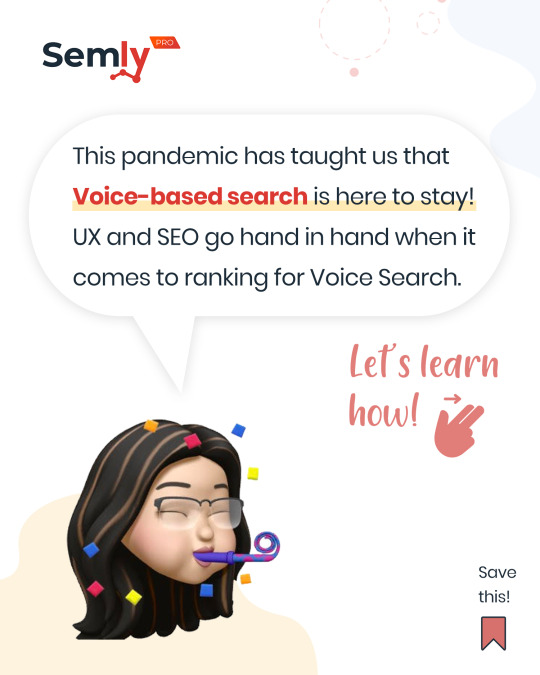
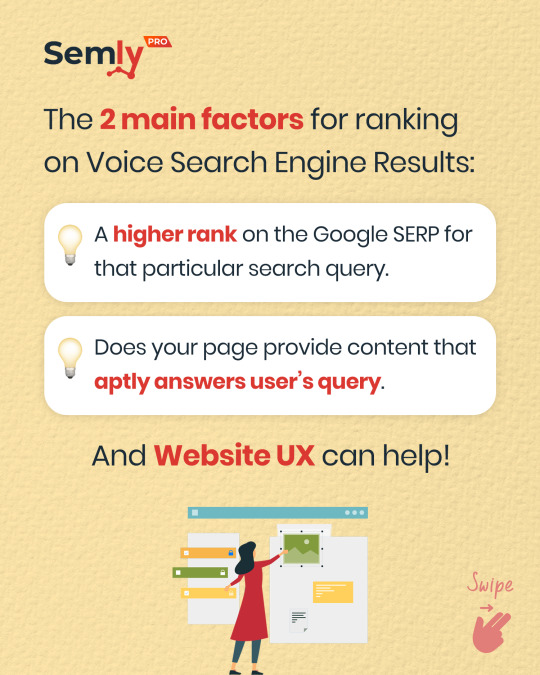

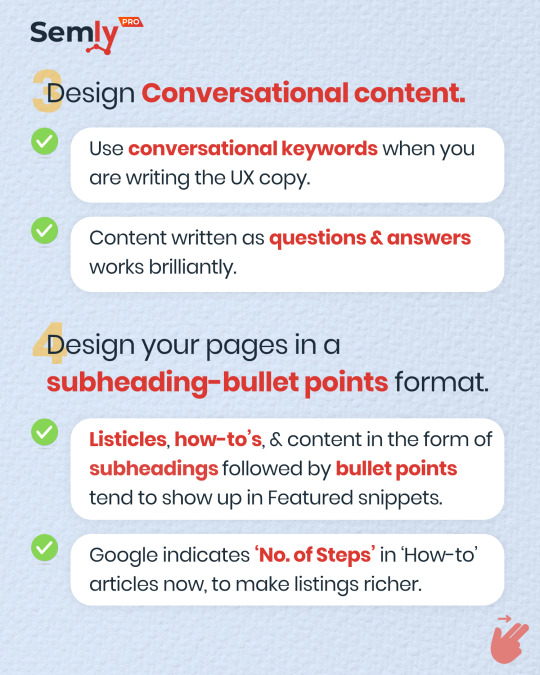
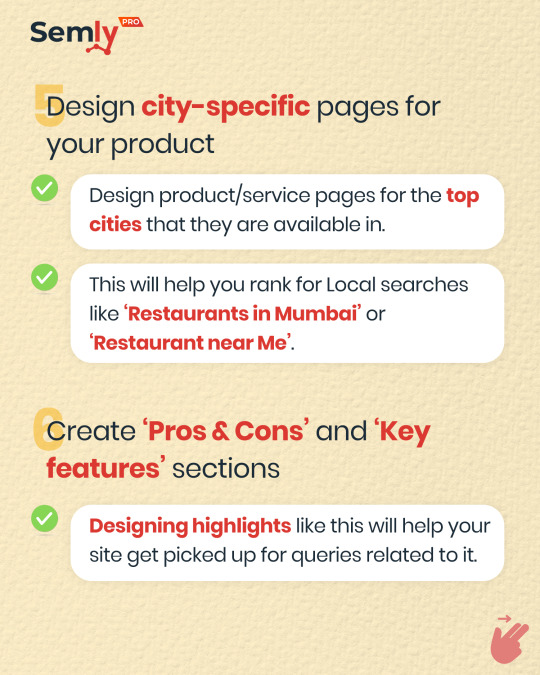
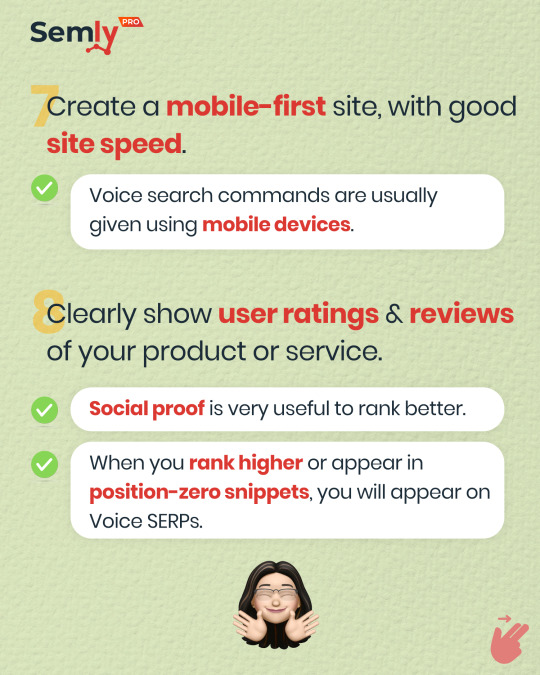

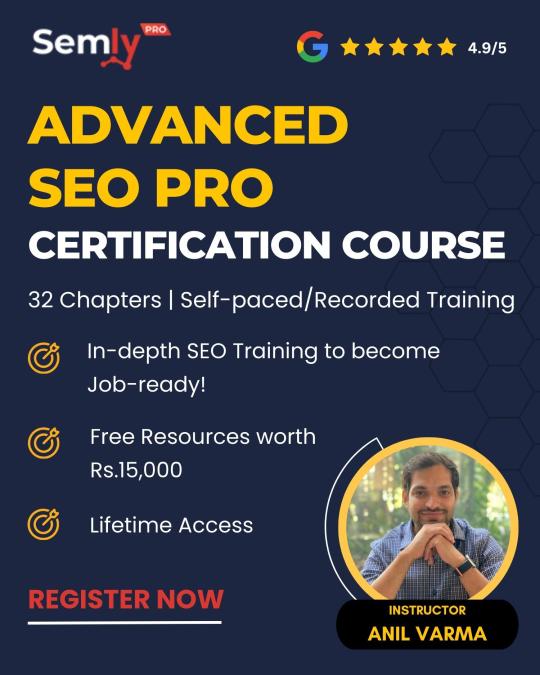
💡 Advanced SEO Pro Certification Course by Anil Varma - REGISTER NOW
❤️ Follow Semly Pro - The SEO Company for more SEO tips.
🎙 Content and Design by Surya Pillai.
#digital marketing#Digital Marketing Tips#search engine optimization#SEO#SEM#search engine marketing#ux#semly pro#semlypro#anil varma#user experience design#surya pillai#google#google search#google analytics
5 notes
·
View notes
Text
What is Digital Marketing? Benefits of Digital Marketing? Why should You hire a Digital Marketer?

Digital marketing refers to the use of digital channels and technologies to promote products, services, or brands to a target audience. It involves various online marketing tactics and strategies to engage potential customers, increase brand awareness, drive website traffic, generate leads, and ultimately boost sales and revenue.
Some common components of digital marketing include:
Search Engine Optimization (SEO): Optimizing websites and content to improve their visibility in search engine results pages (SERPs).
Content Marketing: Creating and distributing valuable, relevant, and consistent content to attract and retain a clearly defined audience.
Social Media Marketing: Promoting products and services on social media platforms to reach and engage with the target audience.
Email Marketing: Sending targeted emails to nurture leads and maintain customer relationships.
Pay-Per-Click (PPC) Advertising: Displaying ads on search engines and other websites and paying only when users click on the ads.
Influencer Marketing: Partnering with influencers or industry leaders to promote products or services.
Affiliate Marketing: Collaborating with affiliates who earn commissions for driving traffic and sales to your website.
Online PR: Engaging in online public relations activities to improve brand reputation and visibility.
Analytics and Data Analysis: Measuring and analyzing data to gain insights into the effectiveness of marketing campaigns and make data-driven decisions.
Benefits of Digital Marketing:
Global Reach: Digital marketing enables businesses to reach a vast global audience regardless of their geographical location.
Cost-Effectiveness: Compared to traditional marketing, digital marketing often offers a more cost-effective way to reach and engage with potential customers.
Targeted Audience: Digital marketing allows businesses to target specific demographics, interests, behaviors, and locations, ensuring that the message reaches the right people.
Measurable Results: Digital marketing efforts can be tracked and measured using various tools, providing insights into the effectiveness of campaigns and areas for improvement.
Personalization: With data-driven insights, digital marketing allows businesses to personalize their messages and offers to individual customers, increasing relevance and engagement.
Real-Time Engagement: Digital marketing facilitates real-time interactions with customers, enabling businesses to respond promptly to inquiries and feedback.
Higher Conversion Rates: The ability to target specific audiences and personalize messages often leads to higher conversion rates compared to traditional marketing.
Why hire a Digital Marketer:
Expertise and Knowledge: Digital marketers are trained professionals with expertise in various digital marketing channels and strategies. They understand the latest trends, algorithms, and best practices to create effective campaigns.
Time and Resource Efficiency: Outsourcing digital marketing tasks to a professional allows businesses to focus on their core competencies while leaving marketing responsibilities to specialists.
Objective Perspective: Digital marketers can offer an objective perspective on marketing strategies, as they are not as emotionally attached to the business as the owners.
Data-Driven Approach: A digital marketer will analyze data and metrics to optimize marketing campaigns, ensuring the best possible return on investment (ROI).
Adaptability: Digital marketers stay up-to-date with the ever-changing digital landscape and adapt their strategies accordingly.
Access to Tools and Resources: Professional digital marketers have access to premium tools and resources that can enhance marketing efforts.
Scalability: Digital marketing agencies can scale their efforts based on the business's needs and growth.
In summary, digital marketing is an essential part of modern business strategies. Its benefits, including global reach, cost-effectiveness, and measurable results, make it a powerful tool for driving business growth and success. Hiring a digital marketer brings expertise, efficiency, and a data-driven approach to help businesses navigate the digital landscape effectively and achieve their marketing objectives.

#digital marketing#freelance digital marketing#digital marketing salary#digital marketing agency#google digital marketing course#digital marketing course#types of digital marketing#what is seo in digital marketing#digital marketing analyst#digital marketing associate#digital marketing assistant#digital marketing analytics#digital marketing affiliate#digital marketing and ecommerce#advantages of digital marketing#about digital marketing#about digital marketing course#about seo in digital marketing#digital marketing business#digital marketing blogs#digital marketing basics#benefits of digital marketing#best digital marketing course#basics of digital marketing#best digital marketing agency#digital marketing company#digital marketing channels#digital marketing careers#career in digital marketing#digital marketing definition
5 notes
·
View notes
Text
Silent Marketing Tips and Tricks for Business Success

Introduction: In today's competitive business landscape, effective marketing is essential for success. While flashy advertisements and aggressive promotions can be effective, there's another, quieter approach known as "Silent Marketing" that can yield remarkable results. Silent Marketing involves subtle strategies that engage your audience without overwhelming them. In this comprehensive guide, we'll share 500 valuable Silent Marketing tips and tricks to help your business thrive.

Table of Contents:
Chapter 1: Building a Solid Foundation 1.1 Define Your Brand Identity 1.2 Identify Your Target Audience 1.3 Craft a Unique Value Proposition 1.4 Establish Clear Business Goals 1.5 Develop a Content Strategy 1.6 Optimize Your Website for Conversions 1.7 Leverage Social Proof 1.8 Understand Your Competitors 1.9 Monitor Industry Trends 1.10 Build Strong Customer Relationships

Chapter 2: Content Marketing 2.1 Create High-Quality Blog Posts 2.2 Develop Engaging Videos 2.3 Start a Podcast 2.4 Guest Post on Industry Blogs 2.5 Share User-Generated Content 2.6 Utilize Email Marketing 2.7 Write Informative Ebooks 2.8 Design Infographics 2.9 Host Webinars 2.10 Collaborate with Influencers

Chapter 3: Social Media Strategies 3.1 Choose the Right Social Platforms 3.2 Post Consistently 3.3 Use Eye-Catching Visuals 3.4 Engage with Your Audience 3.5 Run Contests and Giveaways 3.6 Share User Stories 3.7 Leverage Hashtags 3.8 Create Polls and Surveys 3.9 Showcase Behind-the-Scenes Content 3.10 Monitor Social Analytics

Chapter 4: Search Engine Optimization (SEO) 4.1 Optimize Your Website's Keywords 4.2 Create High-Quality Backlinks 4.3 Optimize for Mobile 4.4 Focus on Local SEO 4.5 Regularly Update Content 4.6 Improve Page Load Speed 4.7 Use Schema Markup 4.8 Create an XML Sitemap 4.9 Monitor Google Analytics 4.10 Invest in Voice Search Optimization

Chapter 5: Customer Engagement 5.1 Personalize Your Marketing 5.2 Listen to Customer Feedback 5.3 Offer Exceptional Customer Service 5.4 Implement Loyalty Programs 5.5 Encourage User Reviews 5.6 Provide Value Through Content 5.7 Showcase Customer Testimonials 5.8 Connect on a Human Level 5.9 Send Handwritten Notes 5.10 Surprise and Delight Your Customers

Chapter 6: Offline Strategies 6.1 Attend Industry Events 6.2 Network Effectively 6.3 Use Print Media 6.4 Collaborate with Local Businesses 6.5 Support a Cause 6.6 Sponsor Community Events 6.7 Offer Exclusive In-Person Experiences 6.8 Send Personalized Gifts 6.9 Speak at Conferences 6.10 Join Professional Organizations

Chapter 7: Measurement and Analytics 7.1 Set Key Performance Indicators (KPIs) 7.2 Use Google Analytics 7.3 Track Social Media Metrics 7.4 Monitor Email Campaigns 7.5 A/B Test Your Marketing Efforts 7.6 Analyze Conversion Rates 7.7 Study Customer Behavior 7.8 Review ROI Regularly 7.9 Adjust Your Strategies 7.10 Stay Informed About Marketing Trends

Conclusion: Silent Marketing is a powerful and strategic approach to grow your business. By implementing these 500 tips and tricks, you can create a marketing strategy that engages your audience quietly but effectively, ultimately leading to long-term success in your industry. Remember, success in marketing often comes from the combination of multiple subtle efforts, so be patient, adapt, and watch your business flourish.
#seo#digitalmarketing#digital art#seo marketing#seo services#marketing#blog#wordpress#social media#google analytics#keyword research
4 notes
·
View notes
Text
E-commerce SEO Strategies Unveiled: Boosting Sales and Visibility
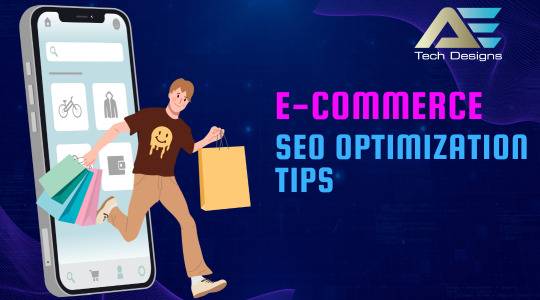
In the ever-evolving landscape of e-commerce, staying ahead of the competition requires not only a compelling product but also a well-optimized online presence. In this comprehensive guide, we will delve into the world of E-commerce SEO optimization. No buzzwords, just actionable insights to enhance your online store's visibility and boost sales. Let's get started
Understanding the Basics
To lay a solid foundation, let's start with the basics. E-commerce SEO optimization involves a series of on-page and off-page strategies aimed at improving your website's ranking on search engine results pages (SERPs). This optimization is pivotal for attracting high-quality organic traffic, increasing sales, and staying competitive in the digital marketplace.
Keyword Research
The cornerstone of any successful SEO campaign is thorough keyword research. Begin by compiling a list of relevant keywords that reflect your products, services, and industry. In addition to your primary keywords, consider long-tail keywords, as they often have less competition and can yield highly targeted traffic. For instance, if you're a digital marketing agency in Seattle, keywords like "digital marketing services in Seattle" and "Seattle SEO company" are goldmines.
On-Page Optimization
High-Quality Content: Your website's content should not only be unique but also provide value to your audience. Craft product descriptions, blog posts, and landing pages that resonate with your target audience. Incorporate the primary and long-tail keywords naturally within the content while maintaining readability and a professional writing style.
Page Titles and Meta Descriptions: Ensure that each page has a unique and descriptive title tag and meta description. These elements should include relevant keywords and provide a concise summary of the page's content. This encourages users to click through to your website from the search results.
Header Tags: Use header tags (H1, H2, H3, etc.) to structure your content. This not only improves readability but also helps search engines understand the hierarchy of information on your pages.
User Experience (UX) Matters
Google values user experience, so make sure your website is user-friendly. Optimize for mobile devices, improve page load times, and ensure intuitive navigation. A seamless UX not only pleases visitors but also satisfies search engine algorithms.
Backlink Building
Off-page SEO is as crucial as on-page optimization. Seek high-quality backlinks from reputable websites in your industry. Guest posting, influencer collaborations, and participating in industry forums can all help in this regard.
Monitoring and Analytics
Track your SEO efforts using tools like Google Analytics and Google Search Console. Regularly review your website's performance, make necessary adjustments, and stay updated on SEO trends and algorithm changes.
Conclusion:
In the ever-competitive world of e-commerce, mastering SEO optimization is your key to success. By adhering to these strategies and tips, you can enhance your website's visibility, drive organic traffic, and ultimately boost your sales. If you're seeking expert assistance, consider partnering with AE Tech Design Agency, your trusted SEO company in Seattle. Contact us today to explore how our digital marketing services can elevate your online presence and drive meaningful results.
Remember, the world of SEO is constantly evolving, so staying informed and adapting your strategies accordingly is essential for long-term success.
#E-commerce SEO#SEO Optimization#E-commerce Strategies#SEO Tips#Organic Traffic#Search Engine Rankings#Keyword Research#On-Page SEO#Off-Page SEO#User Experience (UX)#Backlink Building#Local SEO#Google Analytics#Digital Marketing#SEO Trends#SEO Algorithm#Online Visibility#Website Performance#SEO Company#Seattle Digital Marketing
5 notes
·
View notes
Text
7 Nuggets of How to Build a WordPress Website, Sell it, and Earn an Income! (vol.6)
How to Build a WordPress Website, Sell it, and Earn an Income!
1. In order to have a Google Analytics account, you will need a Google Account.
2. https://analytics.google.com/analytics/academy/course/6
3. Replace the default Web Property ID with our Google Analytics ID.
4. You want a tagline that describes, in short, what your website does.
5. A permalink is a permanent static hyperlink to a particular web page or entry in a blog.
6. The AddToAny plugin…
View On WordPress
3 notes
·
View notes
Text
7 notes
·
View notes
Link
7 notes
·
View notes